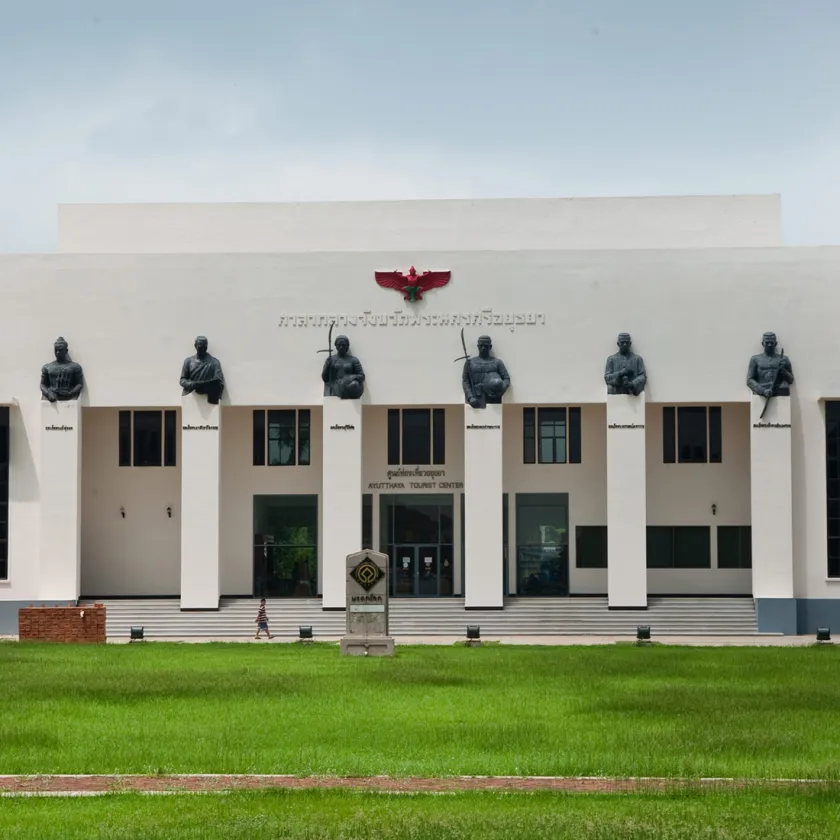It is well known that "Ayutthaya," the former capital of Siam, served as a significant template both physically and conceptually in the establishment of the new capital, Bangkok, during the founding of the Rattanakosin Kingdom. Not only that, but this 417-year-old kingdom also played an important role as a tool for the elites of later periods to create the "past" and "history" for the modern nation-state. This led the Thai state to restore and refurbish ancient sites in the old city, which had been devastated by war, bringing them back to their former glory. This process, defined as the "restoration of the past" in the old city of Ayutthaya, began during the reign of King Rama IV, with the restoration of Chankasem Palace and several temples. It continued with King Rama V using the ancient palace for the Rajamangala ceremony in R.S. 126 (1907), marking the occasion of his reign equaling that of King Ramathibodi II, the longest-reigning king of Ayutthaya. (Afterward, the Grand Palace area was used for important royal ceremonies up until the reign of King Rama VII.) Even after the revolution of 1932, the People's Party continued to use Ayutthaya as a symbol to connect national history but within a different context. This involved applying modern urban planning concepts and connecting the area more with common people. It began with the establishment of the Fine Arts Department in 1933 as the main agency to restore many inner-city temples (though no palaces were restored). They also built the Wang Noi-Ayutthaya Highway (Rojana Road) that cut into the old city island and the Pridi-Thamrong Bridge, which allowed automobile traffic into the old city island for the first time. The bridge, named after two prominent People's Party leaders from Ayutthaya, Pridi Banomyong and Rear Admiral Thawan Thamrongnawasawat, played a significant role in changing the settlement and housing patterns of the city's residents. From living along the riverbanks around the island and using boats as the main mode of transportation, people moved to live more within the inner areas of Ayutthaya Island. This marked the true beginning of the development of the old capital Ayutthaya into a modern city.
In addition to building roads and constructing bridges to connect the new city, the People's Party also built the Ayutthaya City Hall as the provincial administrative office. This building features modern architectural design that reflects the People's Party's ideology of leading the country towards modernity. The three-story building, located at the end of Rojana Road intersecting with Si Sanphet Road, began construction in 1941 during the tenure of Luang Borihan Chonnabot (San) as the provincial governor, with support from Pridi Banomyong, then Minister of Finance. In front of the building, there are six pillars representing the Six Principles of the People's Party. Atop each pillar is a statue of one of six former rulers from the Ayutthaya and Thonburi periods: King Ramathibodi I (King U-Thong), King Borommatrailokkanat, Queen Suriyothai, King Naresuan the Great, King Narai the Great, and King Taksin the Great. It is noteworthy that, except for Queen Suriyothai, who is the only female and did not hold the title of king (she was the queen consort of King Maha Chakkraphat), none of the figures on the statues are from the Rattanakosin era. This reflects the People's Party's concept of honoring women, similar to the creation of the Thao Suranari Monument in Nakhon Ratchasima Province (1933). It also aligns with the campaign for gender equality and the monogamy principle promoted by Field Marshal Plaek Phibunsongkhram to elevate Thailand to a level of civilization comparable to other developed nations.
When the People's Party lost power in 1947, one of its members, Field Marshal Plaek Phibunsongkhram, regained power as Prime Minister for a second term. Field Marshal Plaek continued the "restoration of the past" projects in Ayutthaya, including the restoration of the Viharn Phra Mongkol Bophit and the renovation of the three chedis at Wat Phra Si Sanphet. He also initiated the construction of the Chao Sam Phraya National Museum and the restoration of Bueng Phra Ram to become the first public park on the old city island. This concept was inherited from the People's Party, which favored creating recreational areas for the public in central urban spaces. The City Hall building continued to be used as the provincial office until 1996, when the office was relocated to a new building on the Asian Highway in Khlong Suan Phlu Subdistrict. The original building was then converted into a tourist information center and the Ayutthaya National Art Gallery. During the pro-democracy movement from 2020 to 2021, a group of Ayutthaya residents, calling themselves the "Ayutthaya People's Party," used the building as a gathering place to symbolically protest against the government of Prayut Chan-o-cha.

